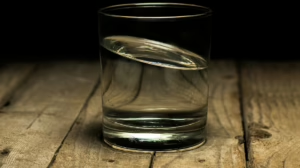5 Creative DIY Easter Egg Decorating Ideas for Kids and Adults
Easter is a delightful time of year, filled with vibrant colors, playful festivities, and cherished traditions. One of the most popular Easter activities is decorating eggs, a practice that parents and children can enjoy together. As the holiday approaches, you might be searching for fresh ideas that will engage both kids and adults alike.
In this article, we’ll explore five creative DIY Easter egg decorating ideas that are easy to follow, require materials you likely already have at home, and provide an exciting opportunity to get creative!
1. Natural Dye Techniques
Overview
Using natural dyes to decorate Easter eggs is not only environmentally friendly but also provides beautiful, soft colors that are unique to each egg. This method is perfect for those who love to incorporate natural elements into their craft.
Materials Needed
- White eggs (hard-boiled or blown out)
- Natural dye sources (e.g., red cabbage, beets, turmeric, onion skins)
- Vinegar
- Water
- Bowls or pots for boiling
- Rubber gloves (optional)
- Strainer
Instructions
-
Prepare the Dyes:
- For each dye, chop or shred the natural source into small pieces.
- For example, for red cabbage, chop it finely; for turmeric, simply use the powdered spice.
- Place 1-2 cups of water and 1 tablespoon of vinegar in a pot, along with your chosen dye source. Bring to a boil and then simmer for about 30 minutes.
-
Strain the Dye:
- After simmering, strain the mixture into a bowl, discarding the solids. You will be left with colored water to dye your eggs.
-
Dye the Eggs:
- Once your eggs are ready and the dyes have cooled, submerge the eggs into the natural dye for a few minutes (the longer you leave them, the darker the color). Remove and let them dry.
- Add Designs:
- For extra flair, use a wax crayon before dyeing to draw patterns on the eggs, which will resist the dye.
Benefits
Natural dyes are safe and can be a great educational experience for kids. They will learn about the source of colors in nature while creating beautiful, unique Easter eggs.
2. Decoupage Eggs
Overview
Decoupage is a fantastic technique that involves gluing paper cut-outs onto a surface to create a decorative finish. This method is suitable for both kids and adults, allowing for a range of complexity from simple shapes for young ones to intricate designs for older crafters.
Materials Needed
- Hard-boiled or blown eggs
- Decorative paper (wrapping paper, tissue paper, or magazines)
- Mod Podge or a mixture of glue and water
- Scissors
- Paintbrush
- Sealer (optional)
Instructions
-
Prepare the Eggs:
- Hard-boil or blow out your eggs and ensure they are clean and dry.
-
Cut the Paper:
- Take your decorative papers and cut them into various shapes or strips according to your design preferences.
-
Apply the Decoupage:
- Using a paintbrush, apply a layer of Mod Podge to the egg. Place a piece of paper onto the egg, and then brush over the top with more Mod Podge. Smooth out any wrinkles.
- Repeat this process until the entire egg is covered or you achieve your desired pattern.
- Finish:
- Once completely dry, you may choose to seal the egg with a clear coat to protect your design.
Benefits
Decoupage allows for limitless creativity and customization. Kids can express their artistic sides, while adults can engage in a more sophisticated, design-focused art form.
3. Marbleized Eggs
Overview
Marbleized eggs present a fun and visually stunning technique for decorating Easter eggs. This method is particularly exciting as it produces unique, swirling patterns that are mesmerizing to create.
Materials Needed
- Hard-boiled eggs
- Shaving cream (or whipped cream)
- Food coloring
- Toothpicks or wooden skewers
- Bowls or trays
- Squeegee or flat edge tool
- Paper towels
Instructions
-
Prepare Cream and Colors:
- Spread a generous layer of shaving cream in a shallow dish.
- Drip a few drops of food coloring on top in random patterns.
-
Create the Swirls:
- Using a toothpick or skewer, gently swirl the colors into the shaving cream to create a marbled effect. Be careful not to mix the colors too much; you want to maintain distinct swirls.
-
Apply the Eggs:
- Roll each egg in the marbled cream gently, ensuring even coverage.
-
Let It Set:
- Allow the eggs to sit for 10-15 minutes to absorb the colors.
- Remove & Clean:
- After the time is up, rinse the eggs under cool water to remove the shaving cream. Pat them dry.
Benefits
The marbleized technique is a fun sensory activity for kids that adds an element of surprise to the outcome. Each egg is a unique work of art!
4. Glitter Eggs
Overview
Glitter eggs are perfect for those who want a touch of sparkle and glamour in their Easter celebrations. This method is simple and yields eye-catching results that kids and adults will both love.
Materials Needed
- Hard-boiled or blown eggs
- Craft glue or an adhesive spray
- Glitter (various colors)
- Bowls or trays for catching excess glitter
Instructions
-
Prepare the Eggs:
- Make sure your eggs are clean and dry before starting.
-
Apply Glue:
- Using a paintbrush or glue bottle, apply a layer of glue to the egg’s surface. You can choose to cover the entire egg or create patterns.
-
Add Glitter:
- While the glue is still wet, sprinkle glitter over the egg. Be generous and make sure to cover all glued areas.
-
Let It Dry:
- Allow the eggs to dry completely. You may also wish to gently shake off any excess glitter.
- Finish:
- For a more polished look, you can seal the glitter with clear varnish.
Benefits
Glitter eggs are visually stunning and easy to make, making them a fun choice for group decorations. The shimmering effect is sure to impress!
5. Stamped Eggs
Overview
Stamping is a simple yet creative method for enhancing Easter eggs. This technique is suitable for all ages, requiring minimal materials and allowing for artistic expression.
Materials Needed
- Hard-boiled eggs
- Ink pads or paint
- Rubber stamps (flowers, geometric shapes, etc.)
- Paper towels or cloths
Instructions
-
Prepare Your Workspace:
- Lay down some newspaper or a cloth to catch any spills.
-
Ink the Stamps:
- If using an ink pad, press the rubber stamp onto the pad to coat it with ink. If using paint, apply a thin layer with a brush.
-
Stamp the Eggs:
- Press the stamp onto the surface of the egg, applying even pressure to ensure a clear imprint. Repeat as desired to create patterns.
- Let Dry:
- After stamping, let the eggs dry completely.
Benefits
This method is straightforward for younger kids, while older participants can experiment with complex patterns and colors. Stamped eggs can become cherished keepsakes!
Conclusion
Easter egg decorating is a wonderful way to embrace creativity and engage in family bonding. These five DIY decorating ideas are designed to be fun, accessible, and suitable for all ages, ensuring that everyone can participate in the festivities. Each method offers its unique charm, from the organic beauty of natural dyes to the sparkle of glitter eggs or the artistry of stamping.
So, gather your materials, invite your family to join in, and have fun bringing your Easter eggs to life this season!
Sources
- "Natural Dyes: A Beginner’s Guide." The Spruce Crafts.
- "How to Decoupage Easter Eggs." Better Homes & Gardens.
- "Marbleized Eggs: Step-by-Step Guide." Martha Stewart.
- "Glittery Easter Egg Craft." Family Crafts.
- "Creative Ways to Stamp Eggs." Crafting with Kids.
These resources not only provide additional insights but also allow you to explore further if you’d like to dive deeper into any specific technique! Happy crafting!


























Add Comment